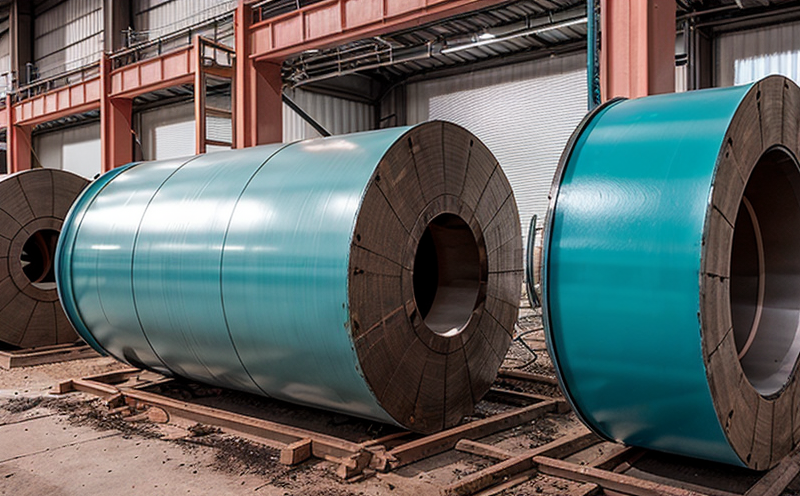ISO 18069 Corrosion Fatigue Durability Testing
The ISO 18069 standard provides a robust framework for evaluating the resistance of metallic materials to corrosion fatigue. This form of testing is crucial in industries where components are subjected to cyclic stress and corrosive environments, such as aerospace, automotive manufacturing, oil and gas exploration, and construction.
Corrosion fatigue occurs when materials undergo alternating mechanical stresses while simultaneously exposed to a corrosive environment. The combination of these two factors can lead to significant material degradation over time, reducing the operational lifespan and reliability of critical components. By employing ISO 18069 testing, manufacturers can ensure that their products withstand both cyclic loading and corrosive conditions without failure.
The standard specifies detailed procedures for conducting corrosion fatigue tests on metallic materials in a controlled laboratory setting. It defines the specimen geometry, test parameters, environmental conditions, and data analysis methods necessary to produce accurate results. The primary goal is to assess the material's ability to resist cracking under cyclic loading and corrosive exposure.
The testing process involves carefully preparing samples according to ISO 18069 specifications. These samples are then subjected to a series of mechanical cycles combined with immersion in a corrosive medium. The number of cycles required for each test can vary depending on the material being evaluated, but it typically ranges from 10^4 to 10^7 cycles.
Once the tests are completed, detailed reports are generated that include information about the sample preparation, testing conditions, observed cracks or failures, and statistical analysis of the results. These reports serve as valuable tools for quality assurance teams, helping them make informed decisions regarding material selection and process optimization.
In addition to its role in ensuring product quality, ISO 18069 compliance also plays an important part in enhancing industrial safety by preventing potential failures due to corrosion fatigue. By adhering to this standard, manufacturers can contribute to safer operations within their respective industries.
- Reduces risk of catastrophic failure: Ensures that materials used in critical applications are capable of withstanding both mechanical stress and corrosive environments.
- Promotes sustainable practices: Helps identify optimal material choices for long-term durability, thereby reducing waste generation during production cycles.
- Aids in regulatory compliance: Ensures that all testing processes follow internationally recognized guidelines, facilitating smoother interactions with global markets.
In summary, ISO 18069 provides a comprehensive approach to assessing the corrosion fatigue resistance of metallic materials. Its implementation contributes significantly towards maintaining high standards of industrial safety and environmental responsibility across various sectors.
Applied Standards
The International Organization for Standardization (ISO) has developed ISO 18069 specifically to address the issue of corrosion fatigue in metallic materials. This standard offers clear guidelines on how to perform laboratory tests that simulate real-world conditions experienced by components in industrial applications.
Some key aspects covered by ISO 18069 include:
- Test Specimen Preparation: Detailed instructions on preparing samples for testing according to specific dimensions and tolerances.
- Cyclic Loading: Specifications regarding the application of alternating stresses at prescribed frequencies.
- Environmental Conditions: Guidelines on creating controlled environments that mimic actual operating conditions, including temperature ranges, humidity levels, and exposure times.
- Data Analysis: Methods for analyzing test results to determine whether materials meet specified performance criteria.
The use of ISO 18069 ensures consistency across different laboratories worldwide, allowing for reliable comparisons between test results. This standardization is particularly beneficial when dealing with international supply chains or collaborating on global projects involving multiple stakeholders.
Industry Applications
The principles outlined in ISO 18069 find extensive application across numerous industrial sectors, particularly those where components experience cyclic loading and corrosive exposure. Let's explore some specific industries that benefit from this testing methodology:
- Aerospace Industry: Aircraft structures often face significant mechanical stresses during flight, alongside exposure to harsh environmental conditions like salt spray. Ensuring materials can withstand such combined effects is vital for maintaining airworthiness.
- Automotive Manufacturing: Vehicle parts subjected to frequent changes in temperature and humidity require robust corrosion resistance to prevent premature failure. Testing according to ISO 18069 helps ensure durability standards are met.
- Oil & Gas Exploration: Equipment used in offshore drilling platforms operates under severe environmental pressures, including saltwater immersion and fluctuating temperatures. Compliance with this standard ensures reliable performance even in extreme conditions.
- Construction Industry: Structural steel elements exposed to atmospheric corrosion need to maintain structural integrity over extended periods. ISO 18069 testing aids in selecting appropriate materials capable of enduring such environments.
By incorporating ISO 18069 into their quality control processes, companies in these and other relevant industries can enhance product reliability while minimizing the risk of accidents caused by material degradation.





